Fall 2025 Newsletter

A Letter from the Director-
Dear Friends, Partners, and Supporters,
As autumn settles over the Basin, I’m filled with gratitude for all we’ve accomplished together and optimism for the path ahead. This year marked a major milestone — the adoption of the 2025 Lake Tahoe Basin Community Wildfire Protection Plan (CWPP), which provides a shared roadmap for reducing wildfire risk across the region. View the plan here.
Tahoe RCD’s Forestry Program is actively supporting partners to implement high-priority projects identified in the CWPP. Through fuels reduction and restorative forestry, we’re improving forest health, increasing resilience to wildfire, and enhancing community protection—especially in the Wildland Urban Interface. Meanwhile, our Tahoe Network of Fire Adapted Communities empowers neighborhoods to take collective, hands-on action to safeguard their homes and communities.
On the water, Tahoe RCD continues its leadership in preventing and controlling aquatic invasive species, working closely with regional partners on early detection, boat inspections, and coordinated management to protect Lake Tahoe’s clarity and ecosystem. The following pages provide more details about Tahoe RCD programs, and the great conservation work we do.
Our success depends on the collaboration and dedication of partners, neighbors, and stewards across California and Nevada. Together, we are carrying forward Tahoe’s legacy of ecological resilience and ensuring its forests, waters, and communities thrive for generations to come.
Warm regards,

Mike Vollmer, Executive Director
Aquatic Invasive Species Control Program-
Tahoe RCD is having a productive season combating aquatic invasive plants across Lake Tahoe. Contracted dive teams surveyed 24 control sites (372 acres), with three more site assessments covering 170 acres planned for October. Divers visited 14 past plant infestation sites for surveillance monitoring. Over the course of the season, light hand removal was required at six of those locations to maintain their weed-free status. Intensive hand removal projects were planned and carried out at six additional sites, including Pope Marsh and Emerald Bay. Tahoe RCD also worked with Elk Point Country Club Marina to plan and implement a diver-assisted suction removal project at Elk Point Marina. In total, from May to September, contracted dive teams removed 11,000 gallons and 19,805 individual plants from Lake Tahoe. Work continues in October, and 2025 data will be presented in our Annual Report.
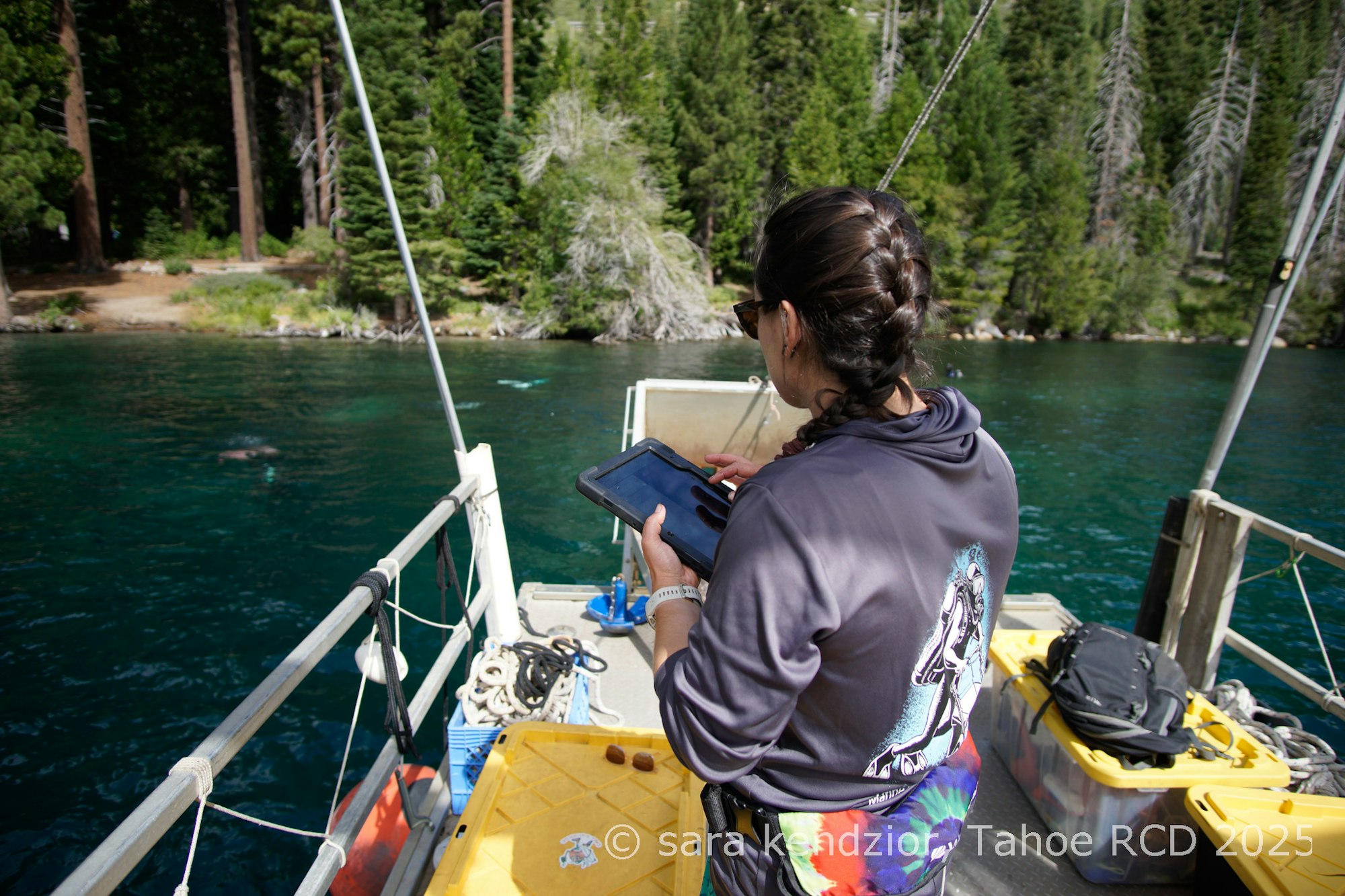

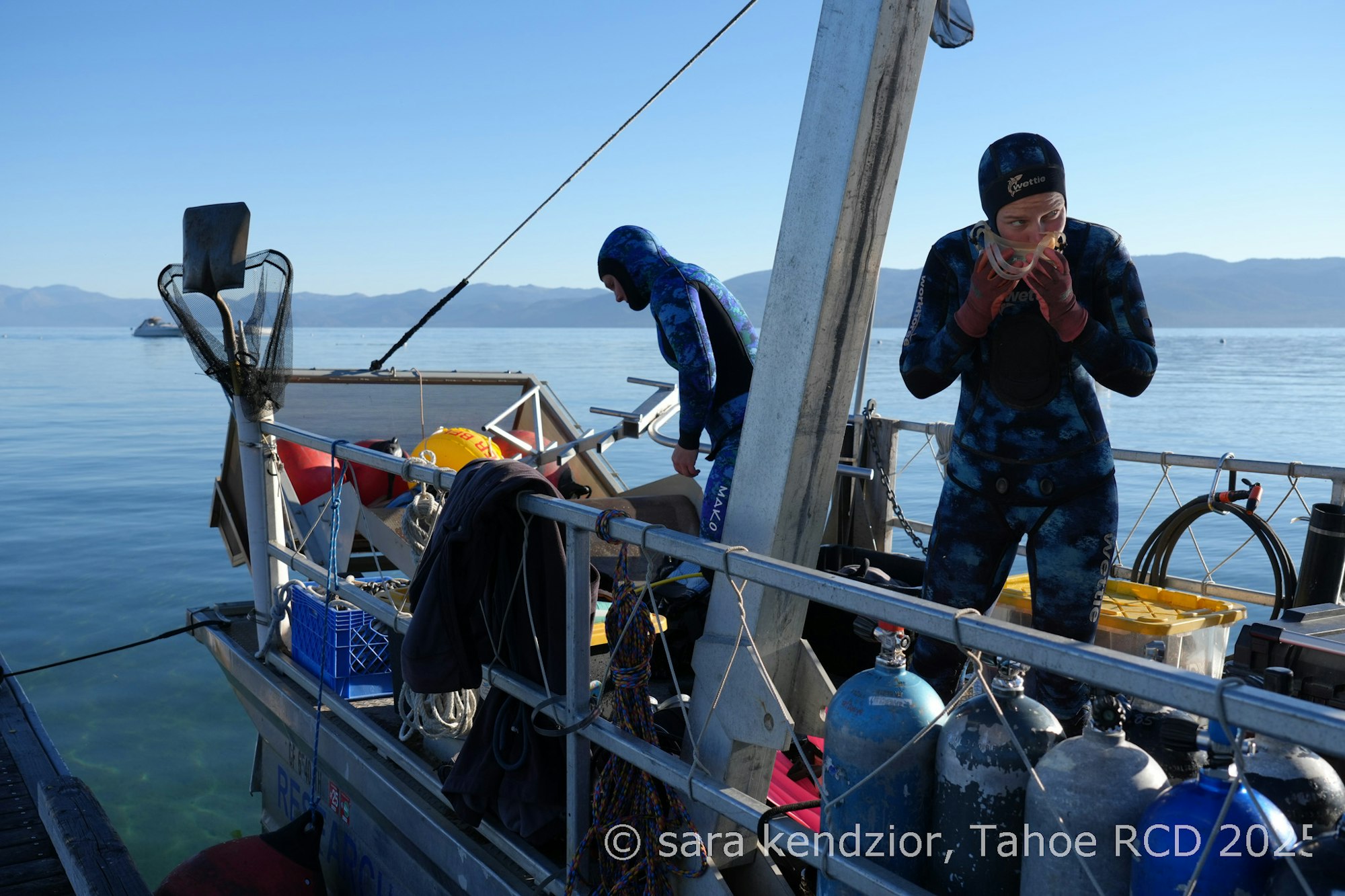





Tahoe RCD developed the South Shore Offshore project, delineating all offshore aquatic invasive plant habitat into 26 units for more effective planning. Although the infestations are not contiguous, due to the highly interconnected nature of these infestations and the unique challenges associated with aquatic invasive plant control in open water environments, these infestations require a unified planning effort. The bounds of the South Shore Offshore Project are Emerald Bay to the West and Elk Point Marina to the East. Each of the 26 units is between 75 and 100 acres. Site assessments and some control work for this project will begin this year.
Forestry, Land Management and Restoration Crews-
The Tahoe Conservation Partnership seasonal field staff are wrapping up another successful season. Field crews completed over 200 projects during their six-month tenure, from May-October. Crews built or repaired barriers to protect conservation land from degradation, reduced fuel on forest lands, and removed litter from hundreds of urban parcels.
Our lot inspectors surveyed thousands of parcels to protect and maintain conservation land throughout the California side of the Tahoe basin. Additionally, our land stewards removed thousands of invasive plants and countless bags of trash, primarily in the Upper Truckee Marsh and Johnson Meadow.
If you, or someone you know is interested in joining our team, please see our website for job announcements. Recruitment for Restoration, Forestry, and Land Management field crew positions begins in January 2026.
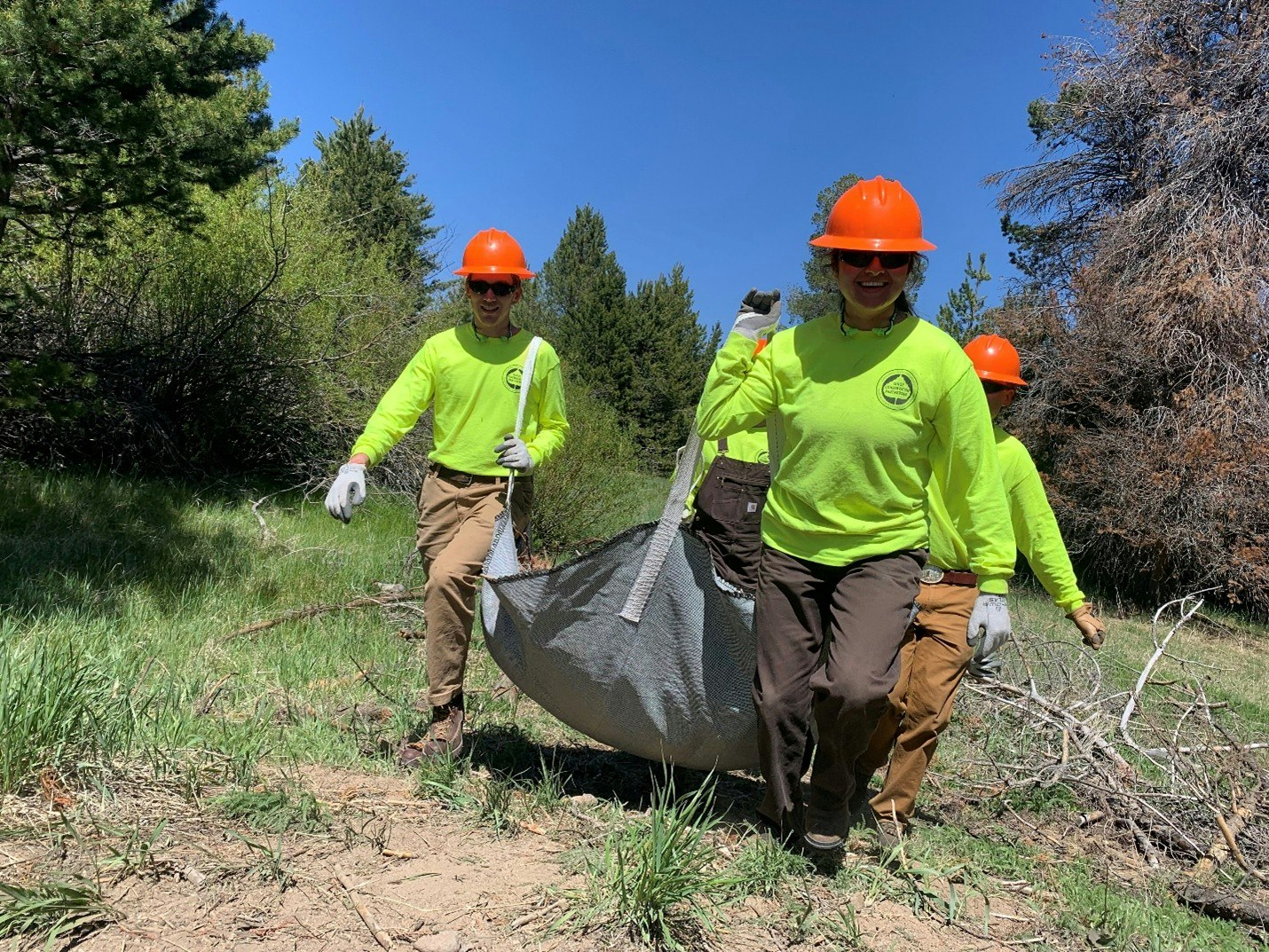
Fire Adapted Communities Program-
The Fire Adapted Communities (FAC) program has continued momentum and growth in our efforts to build wildfire-resilient communities throughout the Tahoe Basin. The FAC Network is supported by 103 active neighborhood groups, of which 73 are now Firewise USA® recognized. Many additional neighborhoods are in the process of becoming fire adapted and earning their Firewise status.
Our outreach and educational programming have expanded significantly over the past year. Notable actions include:
- Hosting Firewise Risk Assessment and Workday/Action Plan webinars
- Delivering a three-part FAC webinar series in partnership with Living with Fire
- Providing defensible space presentations as part of Latino Conservation Week
- Providing educational outreach at multiple community outreach events
- Presenting to HOAs and participating in neighborhood meetings and workdays
We continue to focus on expanding outreach and strengthening relationships with our local communities, a goal reflected in our engagement metrics. By September 2024, we connected with 1,689 community members. In 2025, that number has nearly doubled, reaching 3,230 community members—and counting!
Wildfire preparedness education continues through our social media channels and the recently updated Tahoe Living With Fire website. A key new addition is the Neighborhood Leader Library, designed to support and empower community leaders with tools and resources for local wildfire preparedness.
We are proud of our strong partnerships with UCCE Master Gardeners, the Living with Fire Program at UNR Extension, local school districts, and our broader Tahoe community. Together, we have created and delivered several impactful projects:
- Top Tahoe Plants brochure, developed with UCCE Master Gardeners
- Educational wildfire model, thanks to Jose Hernandez Garcia
- Children's activity book, created with Living with Fire, UNR Extension (publication in January 2026)
- Defensible space and fuel reduction presentations for grades 6–12 at Lake Tahoe Unified School District, in partnership with Tahoe RCD Forestry Team and local fire districts
As we move into the final months of 2025, we will focus on collecting data to assess the impact of our programs on wildfire risk reduction. At the same time, we will continue collaborating closely with community leaders and agency partners to deepen and expand our outreach efforts across the Tahoe Basin.
Follow Tahoe Living With Fire for wildfire news, prescribed fire updates, preparedness tips, and opportunities to get involved:
· Facebook Instagram TahoeLivingWithFire.com
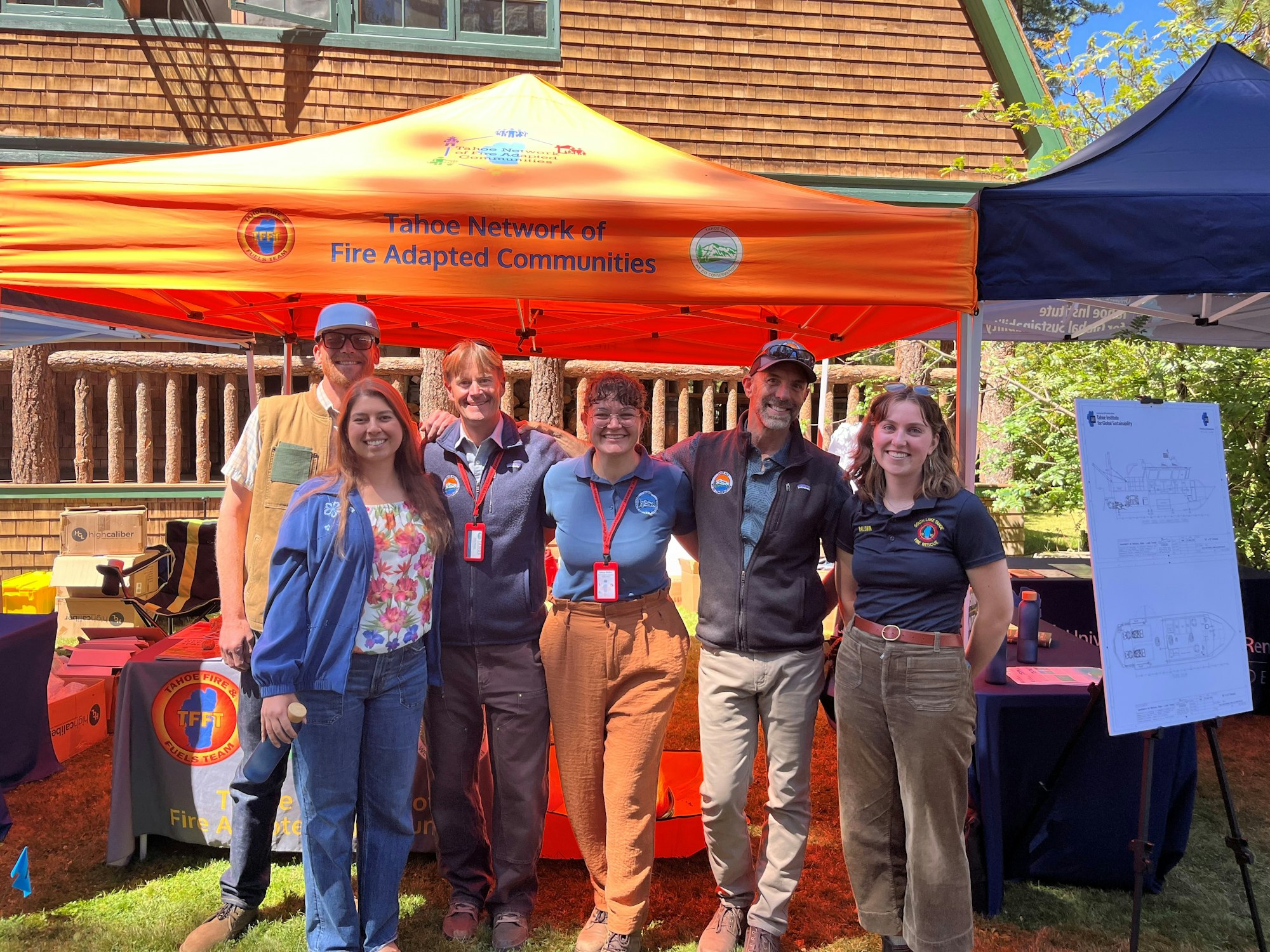
Restoration Program-
It’s been a busy season for the Tahoe RCD Restoration Program! The Johnson Meadow Restoration Project has made serious progress, surpassing 65% design (a significant milestone), setting the project up for permitting and final design. This is a critical step on the road to implementation. All along the way Tahoe RCD staff has been out in the field caring for the land and welcoming locals and visitors alike to the property. In August, Land Steward Kendall Gilstrap hosted a fantastic invasive weed pull event, in partnership with Keep Tahoe Blue, where more than a dozen volunteers removed over 50 bags of invasive weeds!
Program Manager Andrew Schurr has been working with the California Tahoe Conservancy and partners in the Upper Truckee River (UTR) system to build an interpretive sign plan and program. This fall and winter we will be asking for ideas and input to help design a series of informative signs to help visitors to the UTR learn about the river and its environs. Stay tuned for more information and ways to be involved.
We have continued to broaden our partnerships with other agencies in the Lake Tahoe Basin. Tahoe RCD has continued to partner with the LTBMU to study habitat restoration opportunities in the Glen Alpine watershed. We are also working hard to explore watershed restoration opportunities on the North Shore.
To learn more, visit https://www.tahoercd.org/restoration-program
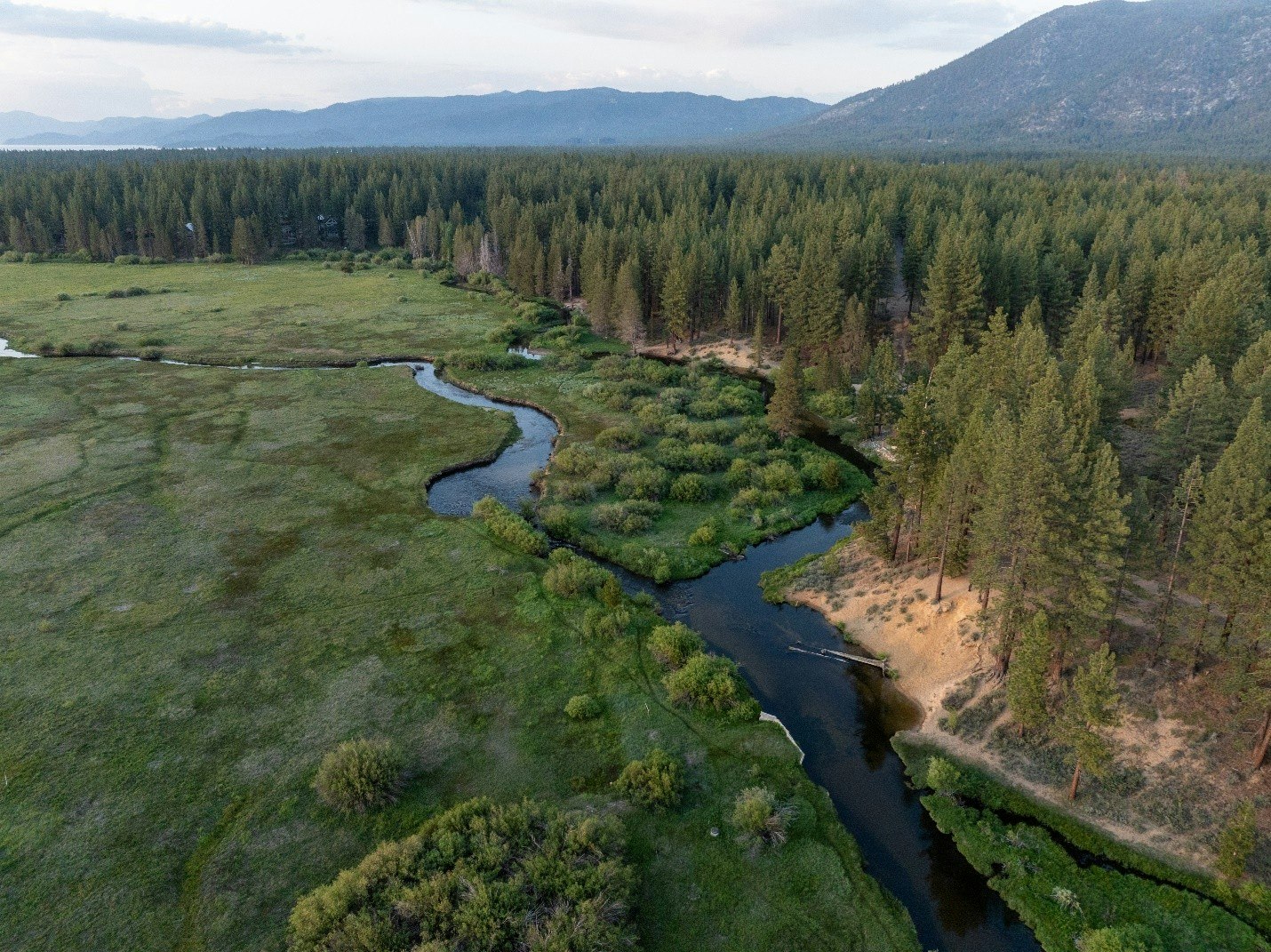
Stormwater Prevention Program-
Happy New Water Year, Tahoe!
October 1 marks the beginning of the water year in the Tahoe Basin—a crucial date for stormwater monitoring. The water year provides a framework for tracking precipitation and runoff across seasons that are defined differently than what we normally think of as seasons. We calculate precipitation totals, runoff volumes, and fine sediment particle and nutrient loads by season so we know when and how the greatest pollutant loads are delivered to Lake Tahoe, helping scientists and local agencies manage stormwater and protect clarity.
The water year is divided into three distinct seasons, each with its own weather patterns and impact on stormwater and lake health:
Fall and Winter (October 1 – February 28):
This period is dominated by frontal systems that move in from the Pacific. These storms bring rain and, when temperatures drop, snow that builds Tahoe’s crucial snowpack. Unfortunately, this is also when we see the highest volumes of urban stormwater runoff. As rain and melting snow flow through urbanized areas, they carry pollutants like sediment and nutrients, resulting in some of the highest pollutant loading to the Lake.
Spring (March 1 – May 31):
As temperatures warm, the snowpack begins to melt. Snowmelt is typically much cleaner than stormwater runoff. It replenishes the lake with relatively low pollutant levels - one of the many reasons a strong snowpack is so important.
Summer (June 1 – September 30):
Summer brings mostly dry weather, with the occasional high-intensity thunderstorm. These storms can mobilize large amounts of sediment due to their intensity, but because they’re short-lived and generate less runoff overall, the total pollutant load tends to be lower than in other seasons.
As we begin a new water year, we will restart our precipitation, runoff, and pollutant tracking system so that we can compare annual and seasonal values across different years and determine how these parameters may be changing over time. We hope to see decreasing pollutant loads in response to all the stormwater treatment strategies that have been implemented over the past two decades. Some monitoring locations do show positive change!
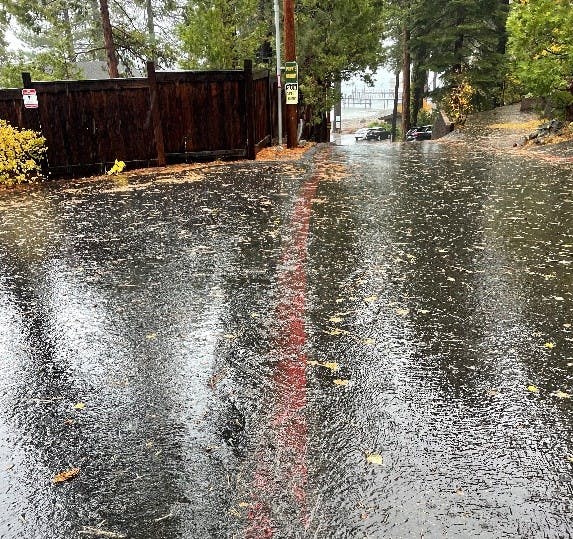
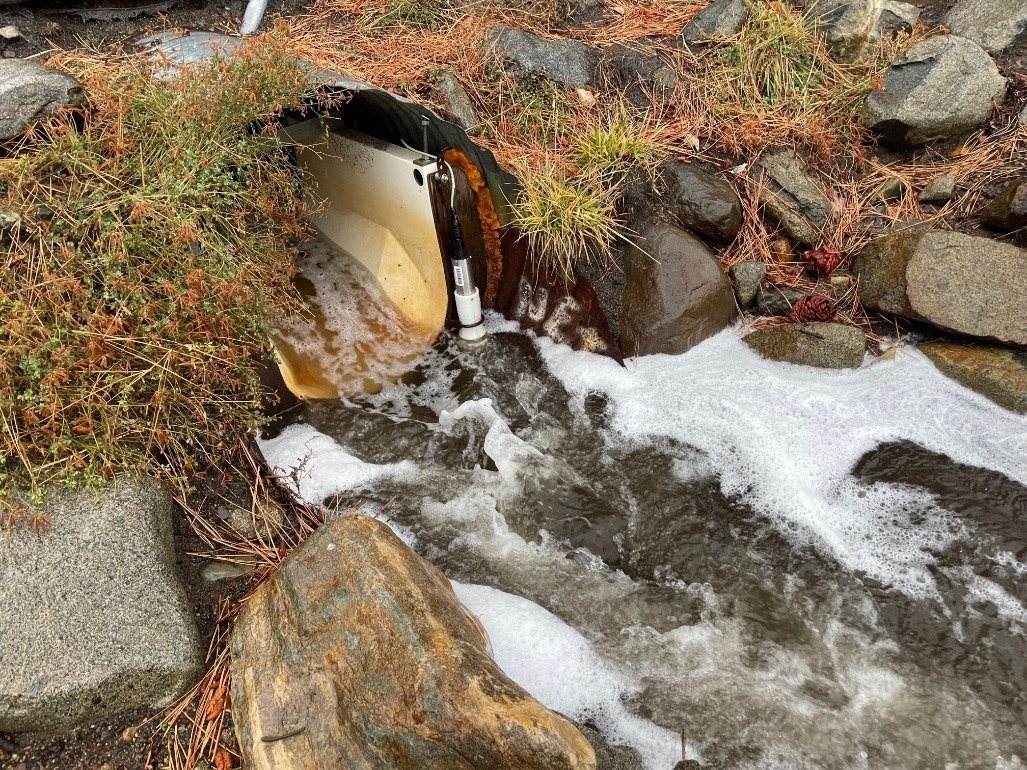
Tahoe Fire and Fuels Team Program-
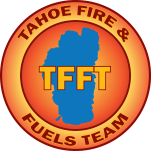
The Tahoe Fire and Fuels Team (TFFT) is a collaborative group of land management and fire agencies, resource organizations, and non-profits that work to reduce wildfire risk, restore resilient forests, and support community wildfire preparedness across the Lake Tahoe Basin. This year marked the first time TFFT has had dedicated staff to coordinate partner efforts, strengthen communications, and provide strategic support for wildfire mitigation and forest health initiatives.
The new TFFT Program Manager, Annabelle Monti, started early in the field season, focusing on aligning Basin-wide efforts and building connections across agencies and organizations. A TFFT Assistant, Katlyn Lonergan, joined later in the summer to lead public outreach and communications. There’s a lot of great work happening around the Basin, and we want to share it!
With this first season of dedicated staff, TFFT prioritized understanding the evolving needs and challenges of partners. Conversations with agencies, local organizations, and community groups have been essential in shaping where TFFT can add the most value – not by duplicating work that’s already successful, but by filling gaps, adding capacity, and amplifying accomplishments.
Key areas of focus:
- Collaboration: Supporting efficient partner coordination and clarifying roles across efforts.
- Communications: Enhancing public outreach through the Fire Public Information Team (Fire PIT) and ensuring consistent messaging about wildfire risk mitigation and forest management projects.
- Strategic Support: Gathering input to inform TFFT’s evolving strategic direction, ensuring Basin-wide priorities align with state and federal goals.
This season reinforced what’s possible when agencies, organizations, and communities work together. Looking ahead, TFFT staff will continue to plug in where support is most needed and help drive Basin-wide progress toward resilient forests and communities.
